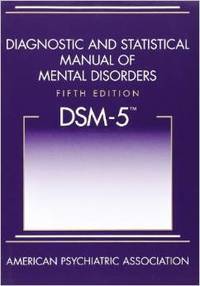Disease labels are now being slapped on an ever-wider range of behavior. Members of the psychiatric and medical professions and their patients have all taken to the idiom of disease like ducks to water. The twin evils of reductionism and the pathologizing of everyday behavior are at work here. Complex behavior, once considered the function of morals, choices and yes, character, is now routinely reduced to the basic components of genetics and biochemistry and outsourced to the ‘expert’. Thus the thief is a kleptomaniac; the arsonist a pyromaniac; and the promiscuous a sex addict. This is both poor scientific practice as well as morally and intellectually impoverished.
It has not stopped Dr. John Ratey, a Harvard associate professor and a well-respected, prominent psychiatrist from claiming in his 1997 book Shadow Syndromes that quirky behaviors are actually mild mental illnesses resulting from brain dysfunction.
The lout who is appropriately obsequious with the boss because he knows where his bread is buttered, but who is less dainty with the wife, even thumping her occasionally, would be a candidate for compassion. He is after all doing battle with what Dr. Ratey terms “Intermittent Rage Disorder”. And the dad who dotes on his children while they are with him, but fails to mail them child support money as soon as they are out of sight, is simply afflicted with “Environmental Dependency Disorder”: He remembers his kids only when they are around. Is there proof for these sub-rosa disease categories? None whatsoever, although this has not prevented Ratey and many like him from coating their pronouncements with a patina of scientific respectability—and then cashing in.
If Ratey is up the creek without a paddle, then he is up there with the best of company. The Psychiatric Diagnostic and Statistical Manual (DSM-IV), the Rosetta Stone of the profession, has grown since its inception in the 1950s from 60 categories of abnormal behavior to about 410 diagnostic labels today and counting. Many of the disorders described in it are a matter of trend and niche. One of the diagnoses Dr. Ratey is particularly fond of is Attention Deficit Hyperactivity Disorder (ADHD). So fond is he of this chimera that he diagnosed himself with it. The reason this seemingly competent person decided he had a learning disorder is because he was unable to free associate during psychoanalysis!
Indeed, ADHD is the focus of a growing industry. The Canadian ADD Foundation says this learning disorder is likely genetically transmitted, affecting six to seven per-cent of the population. There are pervasive efforts underway to pronounce ADHD a disorder of the brain, although the evidence for this is scant. Driven by advocates and special interests, among them former U.S. Vice President Al Gore’s wife Tipper and a slew of medical professionals and peddlers of pharmaceuticals, U.S. legislation has pronounced ADHD a brain-based disorder. This is most curious because the flagship American National Institutes of Health (NIH), led by a panel of independent scientists, concluded that there is as yet “no independent valid test” for ADHD, and that “further research is necessary to establish ADHD as a brain disorder”.
The treatment protocol for ADHD is another aspect of this controversial diagnosis that gives the NIH pause. Children with ADHD are often given powerful psychostimulants. Yet there are no long-term studies of either stimulants or psychosocial treatments, and certainly “no information on the long-term outcomes of medication-treated ADHD individuals in terms of educational and occupational achievements, involvement with the police, or other areas of social functioning”. But what must surely put the advocates to shame is the NIH’s consistent findings that treatment for ADHD yields little improvement in academic achievement and social skills. Treatment, it seems, doesn’t do what it is supposed to do.
If nothing else, it is an interesting exercise to scrutinize the DSM-IV-based ADHD diagnostic criteria. Who doesn’t know a child who “has difficulty sustaining attention, doesn’t seem to listen when spoken to directly, loses things necessary for tasks, fidgets, or is on the go constantly”? Come to think of it, most adults at some point or another answer to such a description. Couple such subjective diagnostic criteria with the fact boys outnumber girls with the condition by nine to one, and ask yourself whether the ADHD-diagnosis is not inadvertently targeting typical male exuberance.
The ADHD-experts claim that children who take these drugs are better liked by other children and experience less punishment for their actions, which in turn improves their self-image. Considering that the adverse effects from the prolonged use of medications for ADHD can range from cardiac arrhythmia through to seizures and liver damage, this is some price to pay for popularity.
©1999 Ilana Mercer
The Calgary Herald
December 28
CATEGORIES: Education & Miseducation, Healthcare, Pseudoscience, Psychiatry & The Therapeutic State, Therapeutic State

 print
print